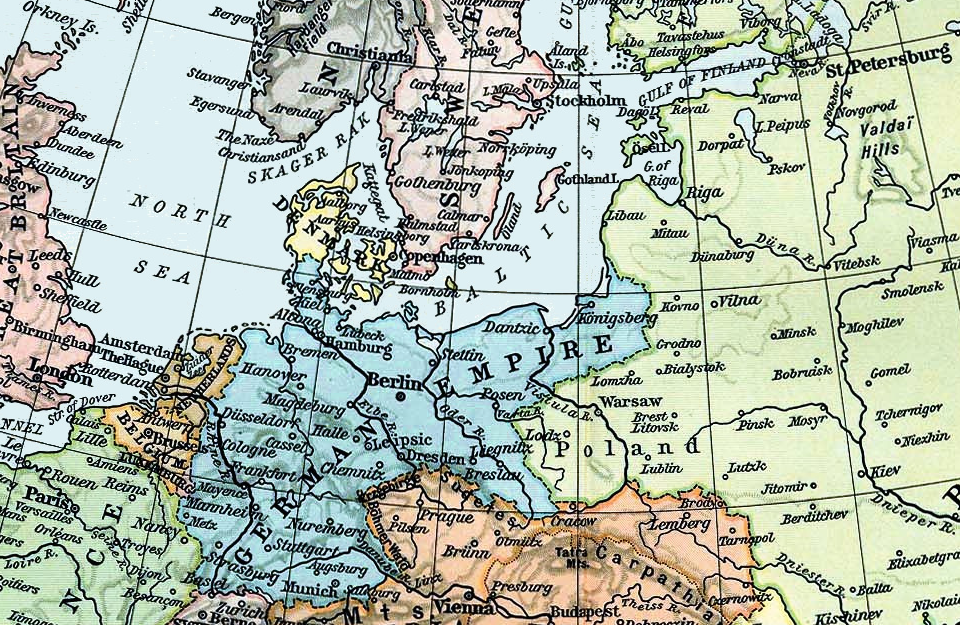|
Preussische Staatsbank
The Prussian State Bank was a state-owned entity that played a significant role in the economy of the Kingdom of Prussia. It was founded in 1772 as a shipping company, the ''Seehandlungsgesellschaft'' or simply ''Seehandlung'', intended to boost Prussia's foreign trade. In the course of the 19th century, it became increasingly active as a state bank, and was consequently renamed ''Königliche Seehandlung (Preußische Staatsbank)'' in 1904 and ''Preußische Staatsbank'' in 1918. It ceased activity in 1945 and was kept as a dormant entity, which was eventually liquidated in 1983. History Shipping company The Prussian sea trading company was founded in Berlin on October 14, 1772 at the instigation of Frederick the Great under the name . The Prussian king acquired 2100 shares of this company and 300 shares were sold to private individuals. The company received the exclusive right to trade in sea salt and the staple right to all wax produced ten miles from the banks of the Vistula ... [...More Info...] [...Related Items...] OR: [Wikipedia] [Google] [Baidu] |
Spree (river)
The Spree ( ; wen, Sprjewja, cs, Spréva) is, with a length of approximately , the main tributary of the River Havel. The Spree is much longer than the Havel, which it flows into at Berlin-Spandau; the Havel then flows into the Elbe at Havelberg. The river rises in the Lusatian Highlands, that are part of the Sudetes, in the Lusatian part of Saxony, where it has three sources: the historical one called ''Spreeborn'' in the village of Spreedorf, the water-richest one in Neugersdorf, and the highest elevated one in Eibau. The Spree then flows northwards through Upper and Lower Lusatia, where it crosses the border between Saxony and Brandenburg. After passing through Cottbus, it forms the Spree Forest, a large inland delta and biosphere reserve. It then flows through Lake Schwielochsee before entering Berlin, as '' Müggelspree'' The Spree is the main river of Berlin, Brandenburg, Lusatia, and the settlement area of the Sorbs, who call the River Sprjewja. For a very short d ... [...More Info...] [...Related Items...] OR: [Wikipedia] [Google] [Baidu] |
SMS Loreley (1859)
SMS was an aviso of the Prussian Navy built in the late 1850s. Built as a paddle steamer, since the Prussian naval command was not convinced of the reliability of screw propellers, she was the first Prussian warship to be fitted with a domestically-produced marine steam engine. The ship carried a light armament of two 12-pound guns and had a top speed of . was intended to serve as the flagship of the gunboat flotillas that formed the bulk of the Prussian fleet in the 1850s. After entering service, the ship was sent to the Italian Peninsula in 1861 to protect Prussians and other German nationals during the Second Italian War of Independence, part of the unification of Italy. She thereafter went to Greece, the Ottoman Empire, and then to Romania before being recalled to Prussia in 1862. She served in her intended role during the Second Schleswig War, serving as the command ship for five flotillas of gunboats based in the Baltic Sea. She saw action against the Danish Navy ... [...More Info...] [...Related Items...] OR: [Wikipedia] [Google] [Baidu] |
SMS Preussischer Adler
SMS was a paddle steamer originally built in the mid-1840s for use on a packet trade, packet route between the Kingdom of Prussia and the Russian Empire in the Baltic Sea. She was requisitioned by the Prussian Navy during the First Schleswig War in 1848 and converted into an aviso, the first vessel of the type ship commissioning, commissioned by Prussia. During the war, she took part in an inconclusive action with the Danish brig , the first naval battle of the Prussian fleet. After the war, she was disarmed and returned to her commercial role, operating uneventfully on the Stettin–St. Petersburg route until 1862, when the expansion of the Prussian Eastern Railway had rendered the maritime route superfluous. The ship was purchased by the Prussian Navy that year and rearmed, once again as an aviso. was sent to the Mediterranean Sea in September 1863 in company with a pair of gunboats, but shortly after they arrived, they were recalled owing to an increase in tension between P ... [...More Info...] [...Related Items...] OR: [Wikipedia] [Google] [Baidu] |


